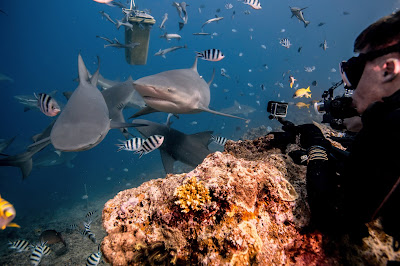
One of the big reasons why people never fulfill their dreams or take a leap of faith to try new things is because they fear the process requires a lot of work. So they throw up their hands and say “Forget it. It’s not worth it.” We are here to tell you that the steps to experiencing an incredible life-changing adventure are easier than you think when you book with Shark Diver. It is our goal to make things simple and smooth as possible. The first step starts with a phone call or email; however you like to communicate.
The minute you connect with us, you have just done the hardest part; deciding that you are going to do something exciting with your life. Now, just let go and we will help you from here.
Gather information on the adventure that you are about to embark upon. There is plenty to know about shark diving. Ask questions. We will answer them and address your concerns. Is it safe? Yes. Do I need to be certified? No. How much does it cost? It varies on the stateroom style, but the starting price is $3095 per person.
You are ready to make the move? What do you do next? Put down a non-refundable $600 deposit per person. We take credit card information right over the phone. If you want to leave a deposit by another method of payment, such as a check or bank transfer, you can. Your spot will be held when we have received payment.
Next, purchase your Medical Evacuation Insurance. Shark Diver partners with AIG Travel Guard and DiveAssure for your convenience. It is mandatory to have this coverage since we are so far out at sea. Both of them include cancellation and trip interruption coverage as well.
Book your hotel accommodations IF you are flying or driving in from out of state and want to rest before and after your shark dive. Our adventure is a live-aboard trip, so no hotel accommodations are necessary if you arrive on the same day as your dive starts. Some people like to arrive a day or more early and stay after to prepare for their journey home. We partner with the Holiday Inn Bayside and Best Western Plus Island Palms which are both in the Point Loma area of San Diego; only 5-7 minutes from San Diego International Airport. Ask for the ‘Shark Diver Discount.’
Make a second payment of $600 by Jan 1st of your dive year and then pay off the full balance by May 15th of that same year. Payment plans are available as well if you want to make smaller payments along the way; monthly, etc.
Make sure your passport is valid and expires at least six months after you return from your shark dive. We do travel to Mexico, so passports are required. If you need to order a passport, allow 6-8 weeks for it to be delivered back to you. Passports can be ordered through your local US Post Office.
If you are driving into San Diego and need to park your car, visit San Diego Airport Parking to find the perfect place to keep your vehicle while you are on your dive. You’ll find competitive rates and the best ways to save time and money.
Now you are ready to go! Pack your bags and prepare for an incredible adventure with Shark Diver. We will send you a suggested packing list. Keep your belongings to a minimum. You will be wearing a wetsuit for half of your trip, so there’s no need to bring the whole closet with you. This trip is casual all the way!
And there you have it; the basic steps to taking an incredibly memorable and life-changing adventure with Shark Diver. If you get nervous, just give me a call. I will walk you through any concerns you may have. Shark Diver’s goal is to ensure that you have a great time. Making it great means smooth sailing from beginning to end.
Let’s go shark diving!
Cindy Michaels
Director of Communications, Shark Diver
About Shark Diver. As a global leader in commercial shark diving and conservation initiatives, Shark Diver has spent the past decade engaged for sharks around the world. Our blog highlights all aspects of both of these dynamic and shifting worlds. You can reach us directly at crew@sharkdiver.com.









































